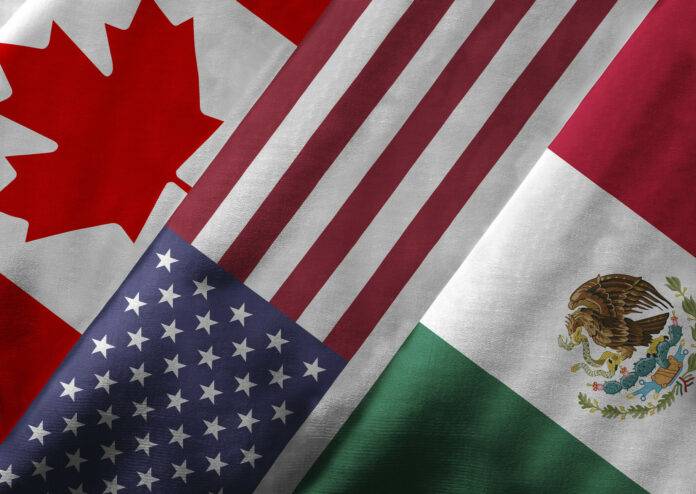President Donald Trump is set to issue a comprehensive trade memo on Monday that will focus on evaluating the United States’ trade relationships with China, Canada, and Mexico. While there had been speculation about new tariffs being imposed on his first day in office, the memo will instead direct federal agencies to study and address persistent trade deficits and unfair trade practices by other nations. This decision led to a global relief rally in stocks and caused the US dollar to weaken against major currencies.
In his inaugural address, President Trump did not mention any specific tariff plans but reiterated his intention to establish the External Revenue Service, a new agency that would collect tariffs, duties, and other revenues from foreign sources to benefit American workers and families. He emphasized his commitment to protecting American interests by tariffing foreign countries to enrich US citizens and revive the nation’s manufacturing sector.
During his election campaign, President Trump had promised to impose significant tariffs on imports, particularly targeting China, to reduce the trade deficit. He had also threatened to impose a 25% import surcharge on goods from Canada and Mexico if they did not address issues related to illegal drugs and migrants entering the US. These proposed tariffs could potentially disrupt trade agreements, supply chains, and increase costs, according to trade experts.
However, the trade memo will focus on investigating trade deficits and unfair trade practices instead of announcing immediate tariffs. It will specifically examine China’s compliance with the 2020 trade deal with the US and the status of the US-Mexico-Canada Agreement. This approach indicates a more systematic and thorough evaluation of trade relationships, rather than hasty tariff implementations.
The news of the trade memo led to a decline in the US dollar against major currencies and a rise in global stock markets. Industry groups and trade lawyers in Washington had anticipated that President Trump might use emergency powers to impose tariffs, but the memo’s approach suggests a more measured strategy involving trade investigations under existing legal authorities.
Overall, President Trump’s trade memo underscores his administration’s focus on addressing trade imbalances and unfair practices to protect American interests. By directing federal agencies to study trade relationships with key partners like China, Canada, and Mexico, the memo signals a deliberate and strategic approach to trade policy that aims to benefit American workers and industries. The global response to this announcement reflects the significant impact of US trade policies on the international economy and financial markets. During his first term in office, President Trump utilized various trade laws and investigations to impose tariffs on steel and aluminum imports as well as Chinese imports. These probes took months to complete, indicating a thorough and deliberate approach to trade policy. William Reinsch, a trade expert at the Center for Strategic and International Studies, noted that Trump seemed to be heeding advice about the potential negative impact of immediate tariffs on financial markets. However, Reinsch and other trade analysts anticipate that Trump will still move forward with a global tariff early in his administration.
Kelly Ann Shaw, a former White House trade adviser during Trump’s first term, emphasized that the universal tariff was a central component of Trump’s economic plan and a long-standing idea that he has supported. Shaw, now with the Hogan Lovells law firm, affirmed in a recent interview that she believes Trump will follow through on his promise to implement tariffs.
In his previous term, Trump’s administration utilized investigations to impose tariffs on steel and aluminum imports, as well as launch duties on Chinese imports totaling $370 billion. This move sparked a trade war between the United States and China, with both countries imposing retaliatory tariffs. The conflict was resolved in 2020 with a deal that required China to increase its purchases of US exports, but these commitments were not fulfilled due to the impact of the pandemic. The upcoming memo suggests that Trump’s administration will seek to hold China accountable for these unmet obligations.
Additionally, Trump had threatened to withdraw from the North American Free Trade Agreement (NAFTA), citing its negative impact on US manufacturing jobs. This led to the renegotiation of the trade pact, resulting in the United States-Mexico-Canada Agreement (USMCA) with stricter rules for automobile manufacturing and enhanced labor and environmental standards. Trump secured a sunset provision in USMCA, allowing for renegotiation in 2026. The tariff threats against Mexico and Canada were viewed as a strategic move to potentially initiate talks for further adjustments to the agreement.
Overall, Trump’s trade playbook in his first term involved a combination of investigations, tariffs, and renegotiations aimed at reshaping trade relationships and policies. Despite initial delays in implementing tariffs, Trump’s administration is expected to remain committed to its trade agenda, including the imposition of global tariffs. The forthcoming memo indicates a continued focus on holding China accountable for trade commitments and potentially reopening discussions with Mexico and Canada. The strategic approach to trade policy during Trump’s first term sets the stage for continued action and negotiation in the coming years.




